For those who didn’t already know: At PIABO, we like to swim against the current. A current example: while many companies are implementing a return to the office, we continue to work remotely. And we have no intention of changing that. Of the current 108 PIABO employees, 46 rarely meet their colleagues at our headquarters at Gendarmenmarkt, instead working from where they live, whether it be Munich or Mainz, Kalchreuth or Rosengarten.
I have my home and workplace in Hamburg. Here’s the surprising part: in the unit I lead, there are 14 employees – and we work entirely remotely. The fascinating thing is: it works. And it works brilliantly.
Let me briefly explain why. Perhaps I can even help to reconcile the desires of many employees for flexible working locations with the quality standards (or fears?) of CEOs and controllers.
My conclusion after two years as Unit Director is: dynamic collaboration and a strong team spirit are possible even remotely. Working digitally can be more efficient. The key is to keep a few things in mind.
Here are my tips for team leads, managers, and those aspiring to become one. They are certainly not exhaustive, and everyone has their own experiences, but they reflect what I find particularly important and helpful.
- ### Listen, Really Listen
In remote teams, I must understand the individuals and the dynamics within the teams well and recognize the “real message” in conversations. This can best be achieved through active and empathetic listening. Often, it’s not just about what is said, but how it is said: besides the content, voice, nuances, and phrasing are significant.
- ### Be Honest
Regular one-on-one meetings, or 1:1s, are crucial. In addition to empathetic listening, I try to be honest. This includes being transparent about my situation. If someone is stressed and distracted, they shouldn’t conduct a meeting with an employee but should clearly state that they are currently preoccupied. Others can sense whether I am truly present. My recommendation (also to myself): a canceled meeting is better than one where I can’t be fully present.
- ### Show Appreciation for the Home Office
Your teams need to know that they can be transparent if the nursery is closed again and they can only be partially attentive. And they need to believe it. Those who work from home are willing to closely integrate work and life. This deserves appreciation, not control.
- ### Create Space for Interaction
When you don’t run into each other daily or weekly in the cafeteria but have to seek out these interactions (and only see each other on screen), open exchanges need time to develop. That’s why I prioritize addressing team issues when they arise. We also have our routines: we check in with the entire team twice a week. And yes, we all still love our team events in person.
- ### Use Nonviolent Communication (NVC)
In digital interactions, we need to be particularly mindful of speaking respectfully. Nonviolent communication ensures honest and factual exchanges and very clear expressions to pinpoint issues and articulate what one wants from the other. My recommendation: practice this together regularly.
- ### Let’s Be Emotional
Our emotions have a strong influence on our work. Positive emotions can inspire ideas, strengthen commitment, and deepen customer loyalty. However, insecurity, overwhelm, or sadness also need space. I ask my team to take emotions seriously and address them when possible. This is especially important in the home office, where personal and professional lives are more intertwined.
- ### Reflect
A team is strongest when mindfulness and trust are a given. This is why we regularly evaluate our collaboration through moderated retrospectives. This is an important routine, especially for remote work, as it provides space and time for reflection, honest exchange, and a shared look forward.
- ### Team First
Challenges usually arise unexpectedly; they cannot be planned or scheduled. An open conversation, a joint agreement on tasks, and understanding the situation of others are more important in the long run than the next “urgent” appointment. Leading consistently with the “Team First” principle is even more important remotely than in person and strengthens employees. Warning: this principle can only be implemented within a suitably structured organisation.
After many years in communications, I am certain that the foundation of high-quality client consulting, alongside professional expertise, is a satisfied and stable team. Whether remote or on-site, it’s less about where we work and more about how we treat each other.


